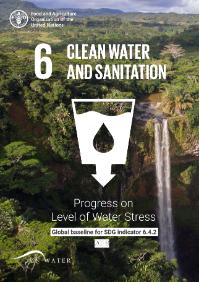Resource information
Access to safe water and sanitation and sound management of freshwater ecosystems are at the core of sustainable development. This is the aim of Sustainable Development Goal 6 (SDG 6), which includes approaches to water management such as environmental flow requirements, international cooperation, capacity building and stakeholder participation.
Indicator 6.4.2 is useful for policymaking as it highlights those regions under high water stress, thereby informing countries on where they need to make efforts to improve water resource usage and promote water saving.
Agriculture is by far the largest user of water worldwide, so reducing water use in this sector is particularly important. Agricultural water-savings can take many forms, including more sustainable and efficient food production through sustainable water management practices and technologies, and reducing freshwater withdrawals by growing a smaller amount of water-intensive crops in water-scarce regions.
Reducing losses in municipal distribution networks, industrial and energy cooling processes is also important for reducing water stress, as well as using treated wastewater and desalinated water.
This report describes the methodology for the assessment of SDG indicator 6.4.2 on the level of water stress, illustrating its development in the pilot phase of the GEMI project, and describing the technical steps needed to apply it. It passes to present the data collection process, and the role of the various national and international stakeholders in the monitoring process. Finally, the report shows the results of the first implementation of the indicator, defining its baseline and proposing key messages for the interpretation of the results.


